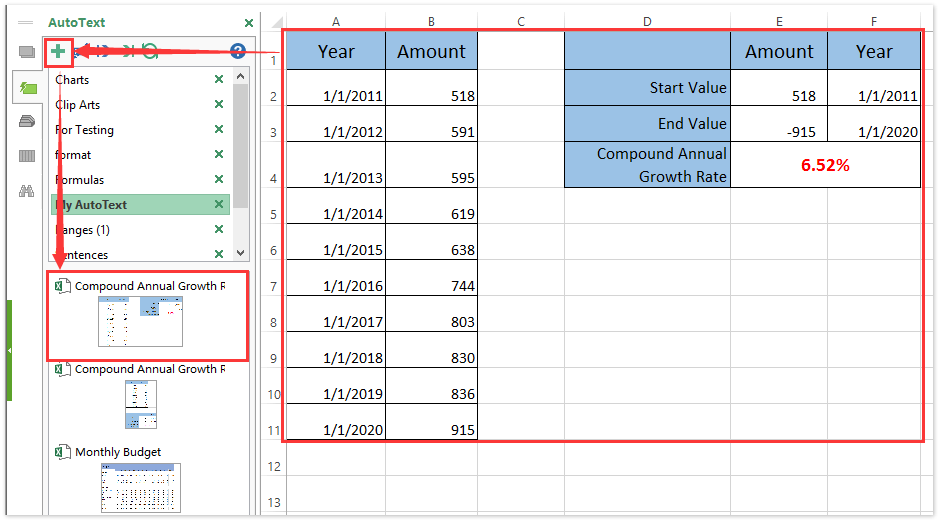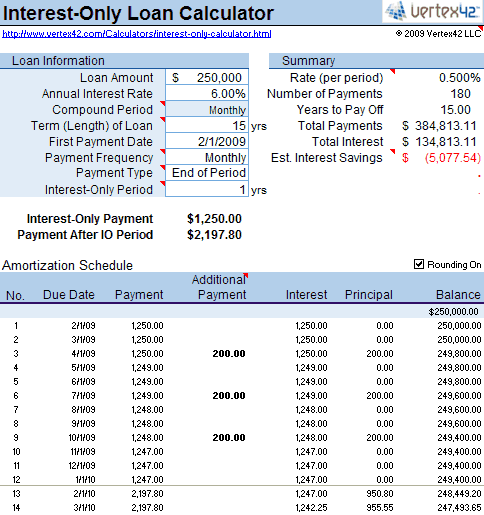2020. 2. 7. 17:56ㆍ카테고리 없음
- How To Calculate Interest Compounded Monthly
- Compounding Interest Excel Calculate Monthly Payment With Pmt Online
Excel for Office 365 Excel for Office 365 for Mac Excel 2019 Excel 2016 Excel 2019 for Mac Excel 2013 Excel 2010 Excel 2016 for Mac Excel for Mac 2011 Excel Online Excel Mobile Managing personal finances can be a challenge, especially when trying to plan your payments and savings. Excel formulas can help you calculate the future value of your debts and investments, making it easier to figure out how long it will take for you to reach your goals.
Use the following functions:. PMT calculates the payment for a loan based on constant payments and a constant interest rate. NPER calculates the number of payment periods for an investment based on regular, constant payments and a constant interest rate. PV returns the present value of an investment.
The present value is the total amount that a series of future payments is worth now. FV returns the future value of an investment based on periodic, constant payments and a constant interest rate. Figure out the monthly payments to pay off a credit card debt Assume that the balance due is $5,400 at a 17% annual interest rate.

Excel's PMT function calculates the monthly payment of the loan, inclusive of principal and interest. Enter '=PMT(interest,periods,amount)' without quotes (here and throughout) in an empty cell. Replace the variables with the appropriate figures or calculations. Sep 4, 2018 - Calculations using the payment (PMT) function with Google Sheets. You can input annual payments or monthly payments, but remember to adjust the interest. Of Microsoft Excel for free online, which includes the payment function. Do compound interest calculations using a basic spreadsheet editor.
Nothing else will be purchased on the card while the debt is being paid off. Using the function PMT(rate,NPER,PV) =PMT(17%/12,2.12,5400) the result is a monthly payment of $266.99 to pay the debt off in two years. The rate argument is the interest rate per period for the loan. For example, in this formula the 17% annual interest rate is divided by 12, the number of months in a year.
The NPER argument of 2.12 is the total number of payment periods for the loan. The PV or present value argument is 5400. Figure out monthly mortgage payments Imagine a $180,000 home at 5% interest, with a 30-year mortgage. Using the function PMT(rate,NPER,PV) =PMT(5%/12,00) the result is a monthly payment (not including insurance and taxes) of $966.28.

How To Calculate Interest Compounded Monthly
The rate argument is 5% divided by the 12 months in a year. The NPER argument is 30.12 for a 30 year mortgage with 12 monthly payments made each year. The PV argument is 180000 (the present value of the loan). Find out how to save each month for a dream vacation You’d like to save for a vacation three years from now that will cost $8,500.
The annual interest rate for saving is 1.5%. Using the function PMT(rate,NPER,PV,FV) =PMT(1.5%/12,3.12,0,8500) to save $8,500 in three years would require a savings of $230.99 each month for three years. The rate argument is 1.5% divided by 12, the number of months in a year. The NPER argument is 3.12 for twelve monthly payments over three years. The PV (present value) is 0 because the account is starting from zero. The FV (future value) that you want to save is $8,500.
Now imagine that you are saving for an $8,500 vacation over three years, and wonder how much you would need to deposit in your account to keep monthly savings at $175.00 per month. The PV function will calculate how much of a starting deposit will yield a future value.
Using the function PV(rate,NPER,PMT,FV) =PV(1.5%/12,3.12,-175,8500) an initial deposit of $1,969.62 would be required in order to be able to pay $175.00 per month and end up with $8500 in three years. The rate argument is 1.5%/12. The NPER argument is 3.12 (or twelve monthly payments for three years). The PMT is -175 (you would pay $175 per month). The FV (future value) is 8500. Find out how long it will take to pay off a personal loan Imagine that you have a $2,500 personal loan, and have agreed to pay $150 a month at 3% annual interest. Using the function NPER(rate,PMT,PV) =NPER(3%/12,-150,2500) it would take 17 months and some days to pay off the loan.
The rate argument is 3%/12 monthly payments per year. The PMT argument is -150. The PV (present value) argument is 2500. Figure out a down payment Say that you’d like to buy a $19,000 car at a 2.9% interest rate over three years.
Compounding Interest Excel Calculate Monthly Payment With Pmt Online
You want to keep the monthly payments at $350 a month, so you need to figure out your down payment. In this formula the result of the PV function is the loan amount, which is then subtracted from the purchase price to get the down payment. Using the function PV(rate,NPER,PMT) =19000-PV(2.9%/12, 3.12,-350) the down payment required would be $6,946.48. The $19,000 purchase price is listed first in the formula. The result of the PV function will be subtracted from the purchase price. The rate argument is 2.9% divided by 12.
The NPER argument is 3.12 (or twelve monthly payments over three years). The PMT is -350 (you would pay $350 per month). See how much your savings will add up to over time Starting with $500 in your account, how much will you have in 10 months if you deposit $200 a month at 1.5% interest? Using the function FV(rate,NPER,PMT,PV) =FV(1.5%/12,10,-200,-500) in 10 months you would have $2,517.57 in savings.
The rate argument is 1.5%/12. The NPER argument is 10 (months).
The PMT argument is -200. The PV (present value) argument is -500.
Use the PPMT function to calculate the principal part of the payment. The second argument specifies the payment number. Use the IPMT function to calculate the interest part of the payment. The second argument specifies the payment number.
Update the balance. Select the range A7:E7 (first payment) and drag it down one row. Change the balance formula.
Select the range A8:E8 (second payment) and drag it down to row 30. It takes 24 months to pay off this loan. See how the principal part increases and the interest part decreases with each payment.